Looking at the mouth
The next step is to inspect the mouth carefully. Inspect the lips. A blue colour may indicate cyanosis. Ask your patient to open his mouth.
Note:
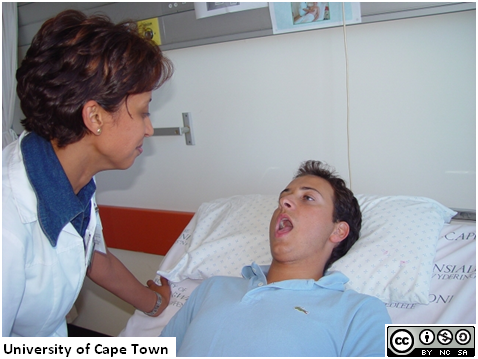
LIPS
- Colour (Cyanosis)
- Lesions (Herpes, Angular stomatitis
- Trauma
- Dehydration (Cracked and Dry)
MOUTH
- Halitosis
- Hygiene
- Edentulous
- Caries
- Gingivitis
- Bleeding
- Gum hypertrophy
- Ulcers
Cyanosis is not an easy sign to detect. Though the tongue is red, it will appear to have a mauve-red colour when looked at very carefully ? particularly around the edges and on its undersurface.
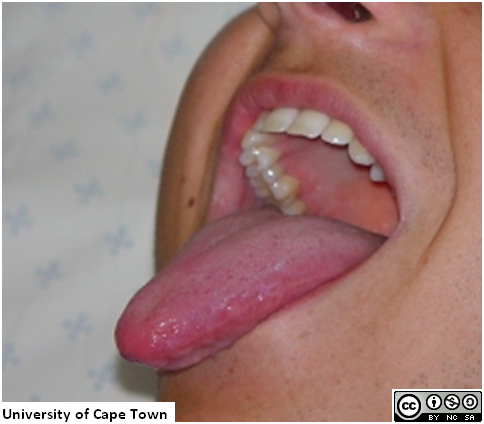
Tongue
- Dry/wet
- Cyanosis
- Candidiasis
- Hairy leukoplakia
- Ulcerations
- Trauma
- Fasciculation
- Glossitis
- Jaundice
Ask him to protrude his tongue, and look carefully for pallor (again suggesting anaemia) and for cyanosis.
| AFRIKAANS | TRANSCRIPT | XHOSA |
|---|---|---|
| Stick your tongue out please./ Steek asseblief u tong uit. / Ndicela ukhuphe ulwimi. |
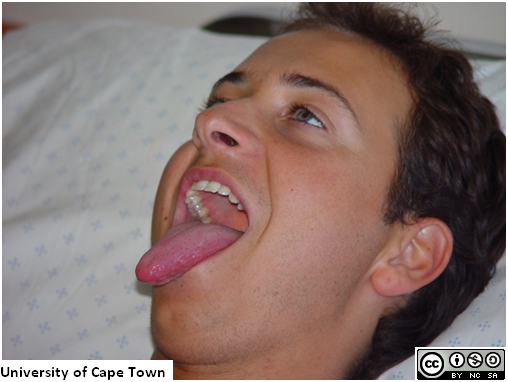
Then inspect all parts of the mouth carefully, using a torch to illuminate the interior of the mouth adequately. Read about the abnormalities you may encounter in your textbook.
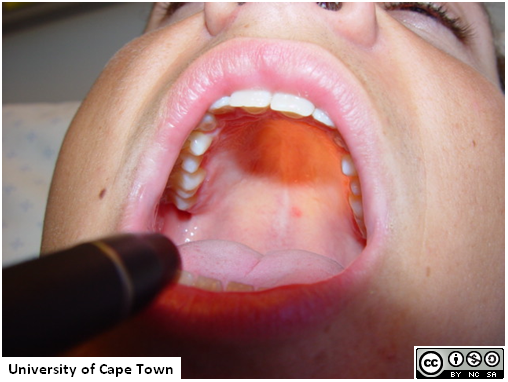
Look at the roof of the mouth...
| AFRIKAANS | TRANSCRIPT | XHOSA |
|---|---|---|
| Open your mouth very wide please./ Maak asseblief u mond wyd oop. / Ndicela ukhamise kakhulu. |
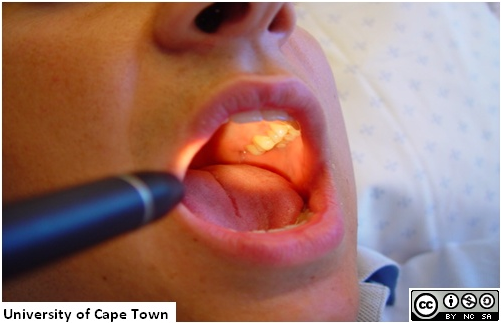
Cheeks
- Candidiasis
- Ulceration
- Pigmentation
- Trauma
the floor of the mouth (asking the patient to lift his tongue)...
| AFRIKAANS | TRANSCRIPT | XHOSA |
|---|---|---|
| Now lift your tongue./ Lig nou asseblief u tong op. / Ngoku khawuluphakamise. |
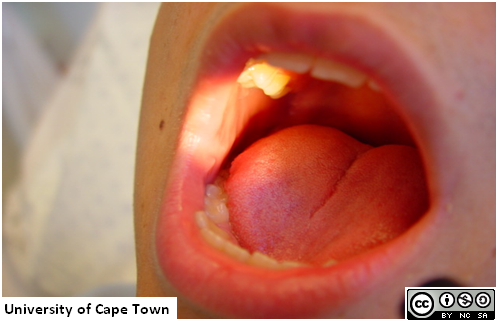
And at the buccal mucosae of the left and right cheeks.
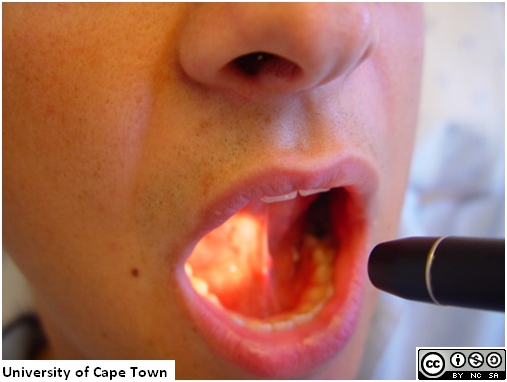
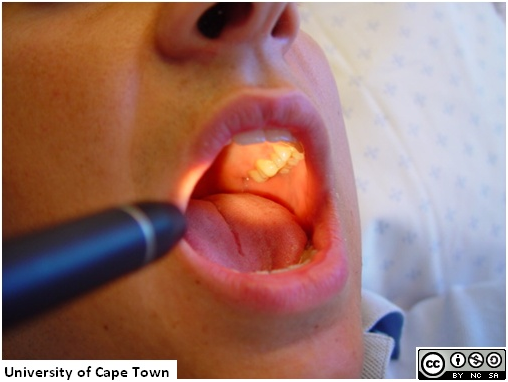
Watch how this is done.
You should obtain a view like this..
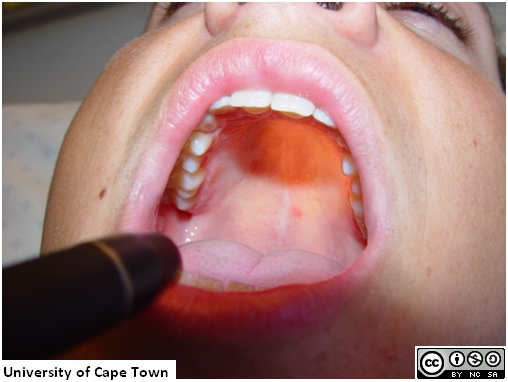
| AFRIKAANS | TRANSCRIPT | XHOSA |
|---|---|---|
| Please keep your mouth open very wide./ Hou u mond wyd oop, asseblief. / Khawuhlale ukhamise njalo. | ||
| I am nearly done/finished./ Ek is amper klaar. / Sendiza kugqiba. | ||
| Ok. That?s fine thank you. / Dit is reg so, dankie. / Heke. Yonke into ilungile. | ||
| Close your mouth now. Thank you./ Maak u mond nou toe, dankie. / Vala umlomo ke ngoku. Enkosi. |
Palate Hard, Soft & Tonsils
- Candidiasis (Shape: Cleft, High arch, Pigmentation)
- Kaposi?s sarcoma
- Symmetry of size
- shape and movement
- Telangiectasia
- Tonsils (Size, Colour, Discharge)
Looking at the pharynx
Inspect the pharynx and tonsils. Ask the patient to open his mouth wide, and to say ?Ah?. Use the torch and look carefully at the back of the throat. See if you can see the lower pharynx adequately.
In many patients, you will have a good view of the pharynx. In others, the tongue will be in the way. If so, use a tongue-depressor to hold the tongue downwards and ask the patient to say ?Ah?. Alternatively ask the patient to take a deep breathe through an open mouth.
In either event, look for abnormal erythema of the pharynx, for pus or exudate, and for enlarged or inflamed tonsils.
Here the clinician looks at the back of the mouth with a torch. The tongue is obscuring her vision. She places a tongue depressor firmly on the centre of the tongue and presses downwards.
